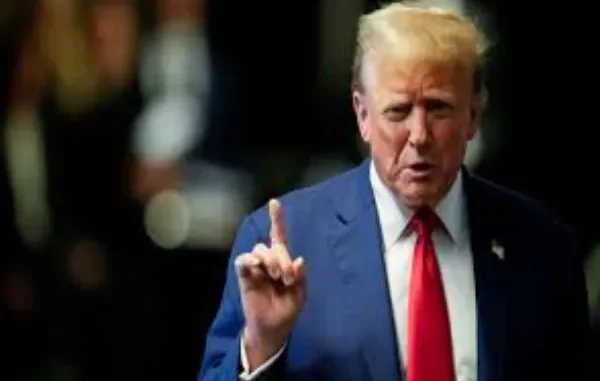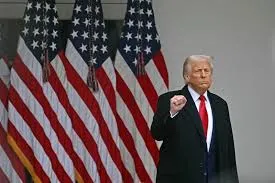
When Donald J. Trump took office in January 2017, he made one thing clear: border security and immigration enforcement would be front and center. Over the next four years, U.S. Customs and Border Protection (CBP) — an agency within the Department of Homeland Security — underwent one of the most dramatic policy shifts in its modern history.
From immigration crackdowns to trade enforcement, CBP wasn’t just a government agency during the Trump years — it became a symbol of the administration’s “America First“ doctrine.
This article explores what changed at CBP under Trump’s leadership between 2016 and 2020, how it impacted border operations, trade, and immigration, and what the long-term effects look like today.
What Is U.S. Customs and Border Protection (CBP)?
CBP is the largest federal law enforcement agency in the U.S. It’s responsible for:
- Securing the nation’s borders
- Processing customs declarations and duties
- Preventing illegal immigration, smuggling, and trafficking
- Facilitating lawful international trade and travel
In short, CBP stands at the intersection of national security, immigration policy, and global commerce.
Trump’s Core Goals for CBP
Throughout his campaign and presidency, Trump promised to:
- Build a physical barrier at the U.S.–Mexico border
- Strengthen interior immigration enforcement
- Reduce illegal crossings and asylum abuse
- Crack down on contraband, drugs, and human trafficking
- Leverage customs to protect U.S. workers and industries
CBP became a key player in executing these political promises.
Major Changes in CBP Under Trump (2016–2020)

Let’s break down the most important shifts that reshaped the agency.
1. The Border Wall Initiative
Perhaps the most iconic and controversial policy, the Trump administration redirected billions of dollars (including military funds) to build a southern border wall.
- Over 450 miles of border wall were built or replaced
- Advanced surveillance tech like drones, cameras, and sensors were deployed
- CBP officers reported increased physical security in certain high-traffic areas
While critics argued that the wall was expensive and ineffective, supporters claimed it helped reduce illegal crossings in specific sectors.
2. “Zero Tolerance” Immigration Policy
In 2018, the administration implemented a “zero tolerance” policy that required the prosecution of all adults crossing the border illegally — even those with children.
- Led to widespread family separations, triggering international backlash
- Over 5,000 children were separated, many without adequate reunification plans
- CBP facilities became overcrowded, with poor conditions exposed by the media
While the policy was eventually rolled back, it left a lasting mark on CBP’s reputation and operations.
3. Asylum Restrictions and “Remain in Mexico”
CBP enforced sweeping asylum restrictions designed to:
- Deter mass migration
- Limit access to legal entry ports
One major change was the Migrant Protection Protocols (MPP) — also known as “Remain in Mexico.”
Under MPP:
- Asylum seekers had to wait in Mexico while their claims were processed
- Tens of thousands were stranded in dangerous border towns
- CBP worked alongside Mexican officials to coordinate logistics
This was a sharp departure from previous policies, where asylum seekers could wait inside the U.S.
4. Title 42 Expulsions
During the COVID-19 pandemic, the administration used Title 42, a public health law, to expel migrants without processing.
- CBP agents were instructed to quickly remove migrants — including asylum seekers
- Over 400,000 expulsions occurred under Title 42 between March and December 2020
- Critics argued it was used more for immigration control than public health
Title 42 marked a new role for CBP as a quasi-health enforcer at the border.
5. More Funding, More Agents, More Power
Trump’s administration boosted CBP’s resources:
- Budget increases, reaching over $18 billion by 2020
- Expanded hiring for Border Patrol agents and officers
- Upgraded facilities, surveillance systems, and drone technology
CBP also gained more discretion in removal procedures, detention, and field-level decision-making.
6. Crackdown on Trade Violations
Beyond immigration, CBP played a major role in enforcing Trump’s trade agenda:
- Administered and collected tariffs on Chinese imports
- Increased seizures of counterfeit goods and intellectual property violations
- Boosted enforcement of anti-dumping laws and trade bans
Importers faced more audits, stricter documentation checks, and higher penalties during the Trump years — a direct result of policy coming from the top.
Impact on Migrants, Importers & Border Communities
Migrants
- Faced more hurdles, longer waits, and greater risk
- Asylum claims dropped significantly
- Families were separated or returned without hearings
Importers
- Navigated rising duties and customs disruptions
- Dealt with longer wait times at ports of entry
- Many rerouted supply chains or paid steep legal fees
Border Communities
- Mixed reactions: some supported the increased security
- Others reported disruptions to trade and cross-border family life
- Humanitarian groups saw spikes in migrant needs and legal cases
Lasting Effects of Trump’s CBP Policies
While the Biden administration rolled back several of Trump’s more controversial policies, many tools and frameworks remain intact, including:
- Use of Title 42 (until 2023)
- Increased surveillance and data-sharing
- Border infrastructure enhancements
- Aggressive trade enforcement mechanisms
CBP continues to grapple with political pressure, staffing challenges, and shifting humanitarian demands — many of which were amplified during Trump’s presidency.
Conclusion: Trump’s CBP Legacy
Between 2016 and 2020, Customs and Border Protection became one of the most visible agencies in America. Its role expanded from customs enforcement to national security, immigration control, and political battleground.
Whether viewed as a protector of national sovereignty or a symbol of overreach, there’s no doubt: Trump changed the course of U.S. border policy, and CBP was at the center of it all.
Are you a business owner, policy researcher, or importer trying to navigate CBP regulations post-2020? Stay informed — these policies still affect travel, trade, and security today.

Leave a Reply